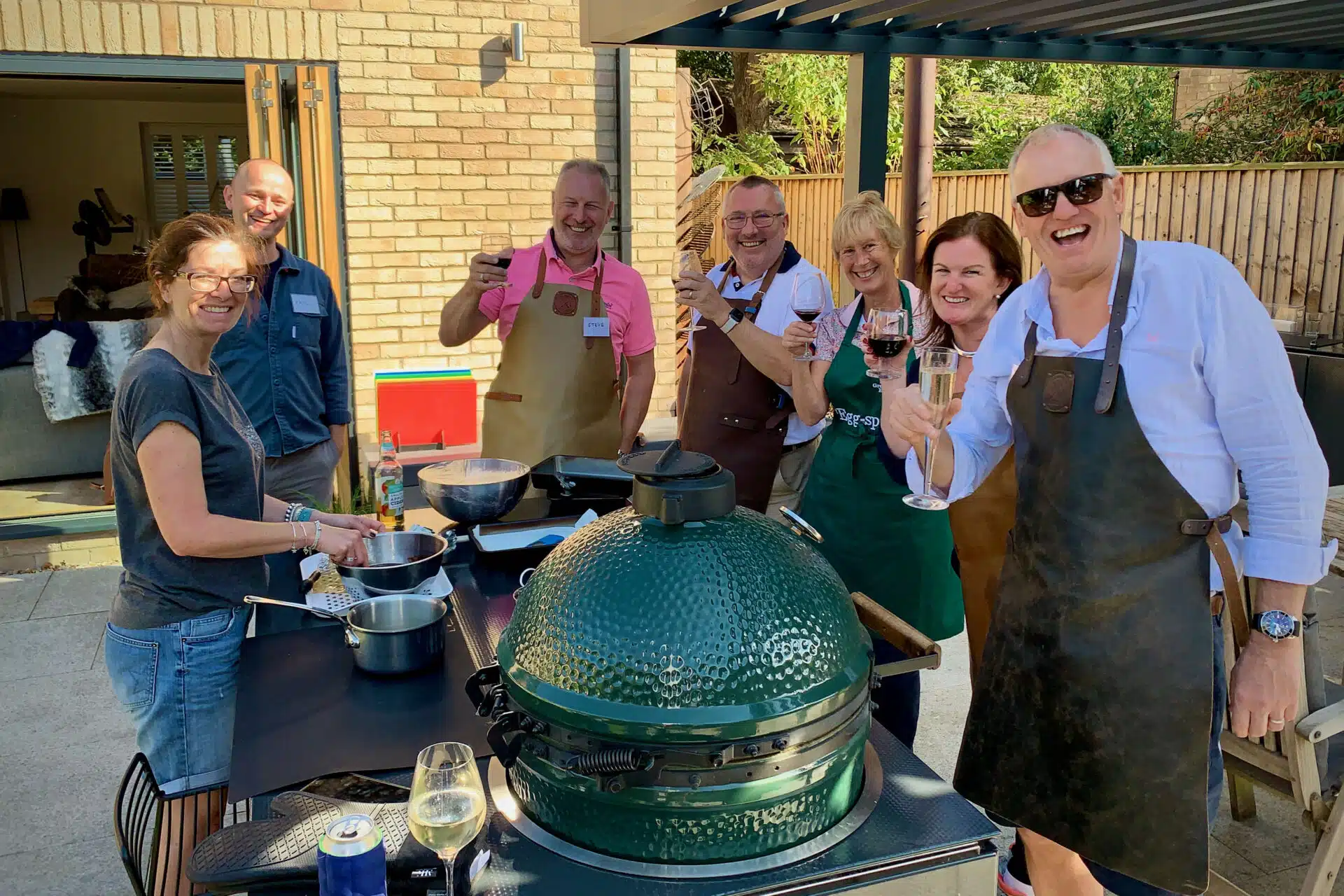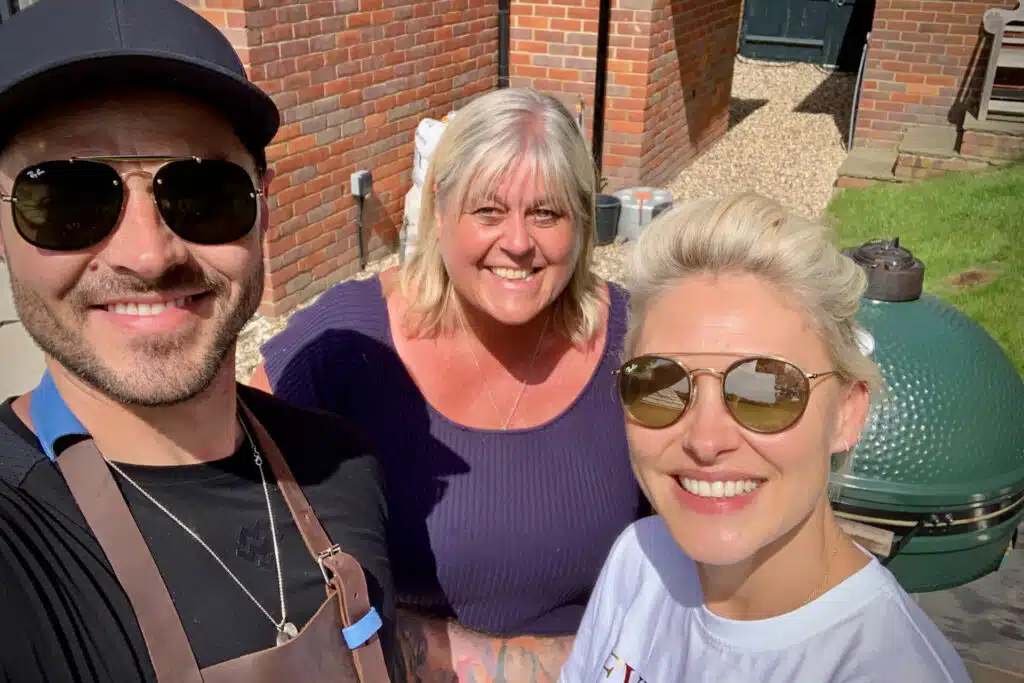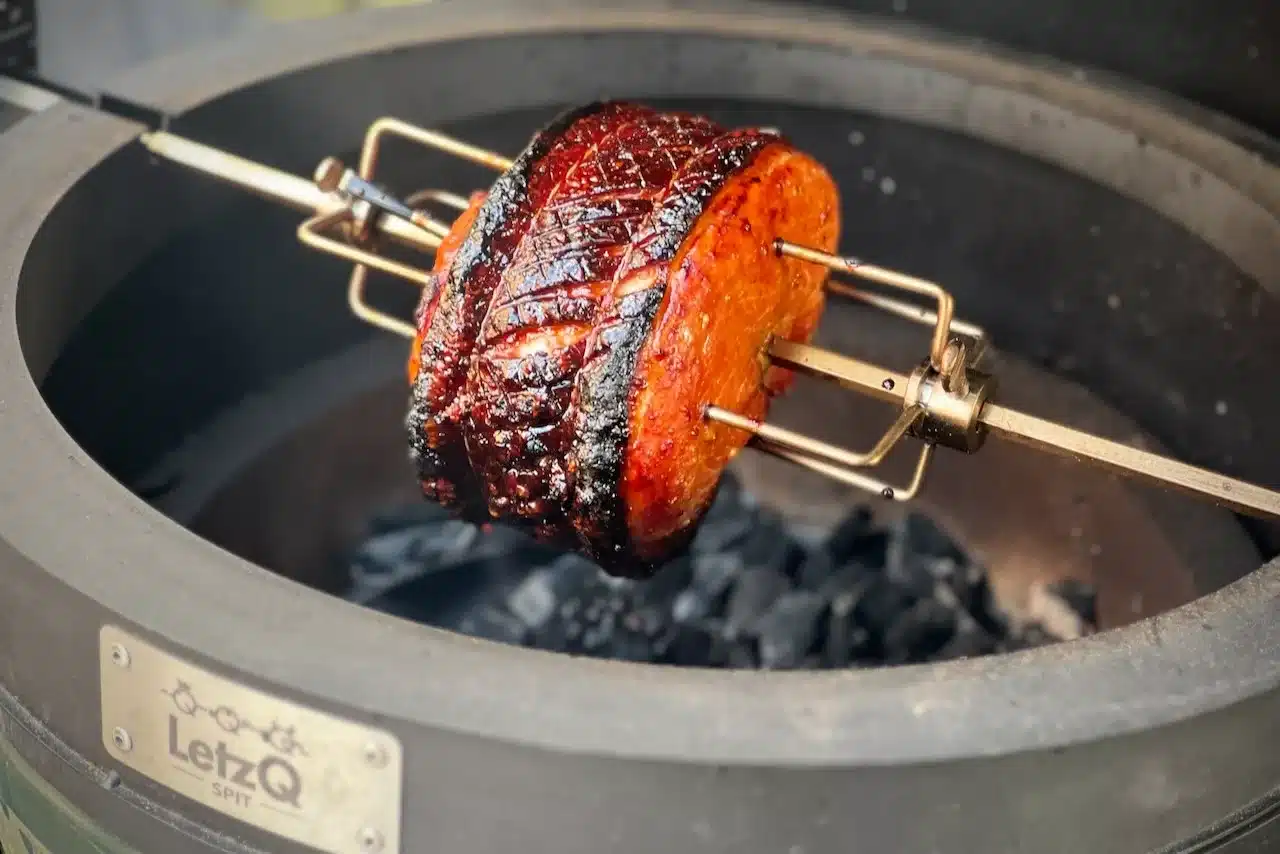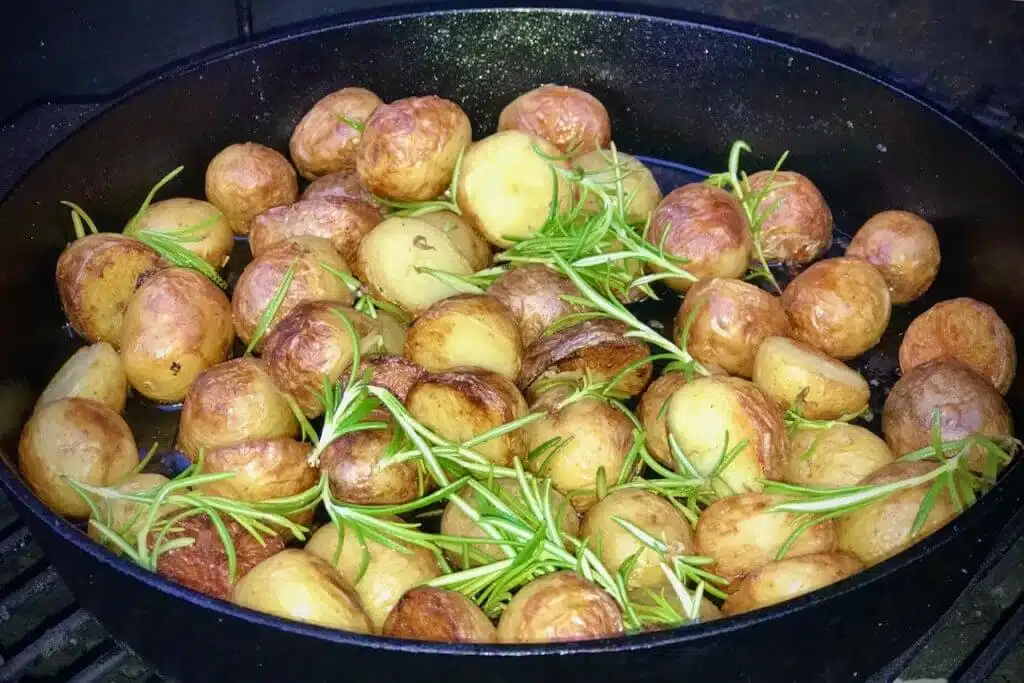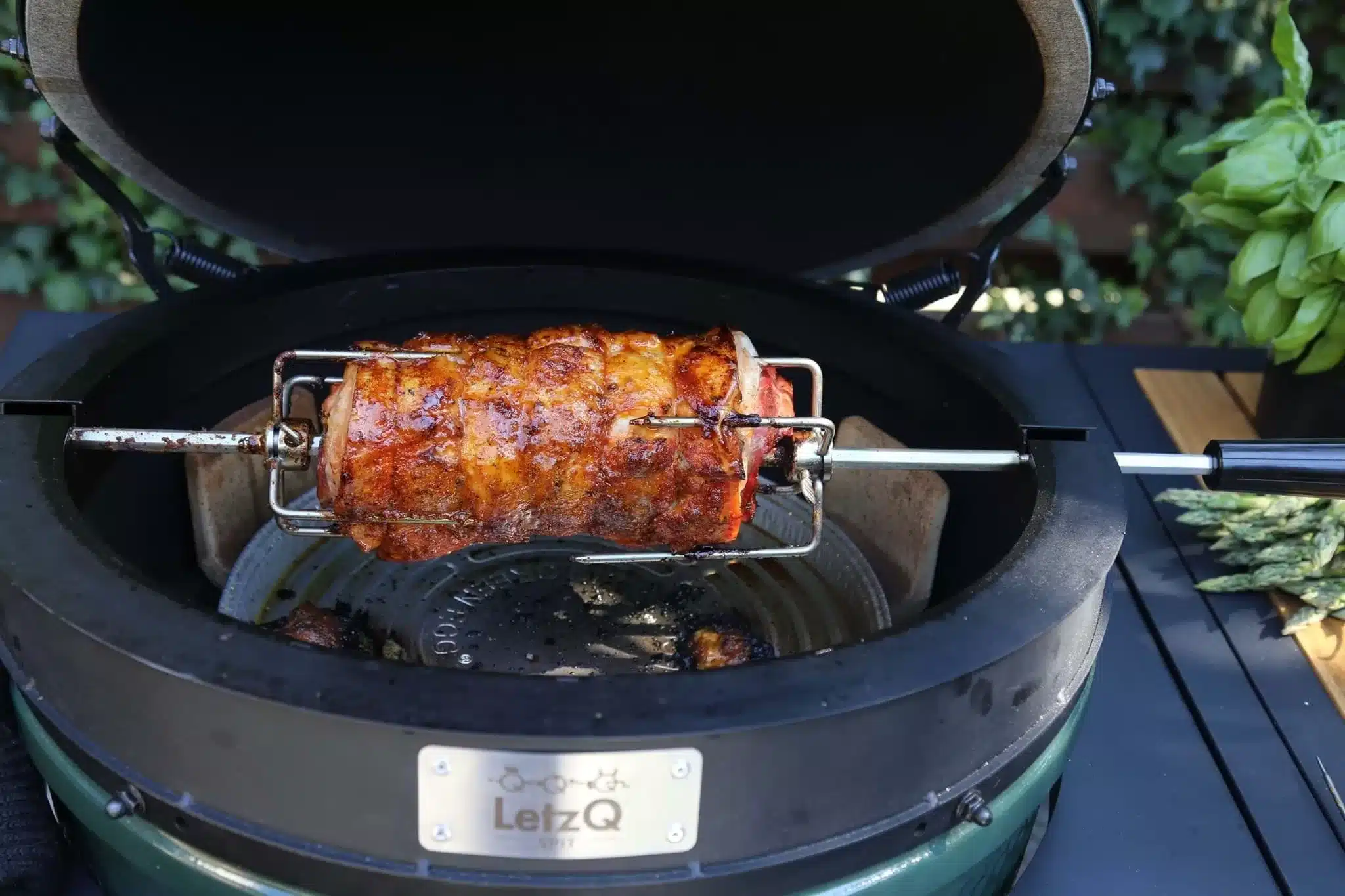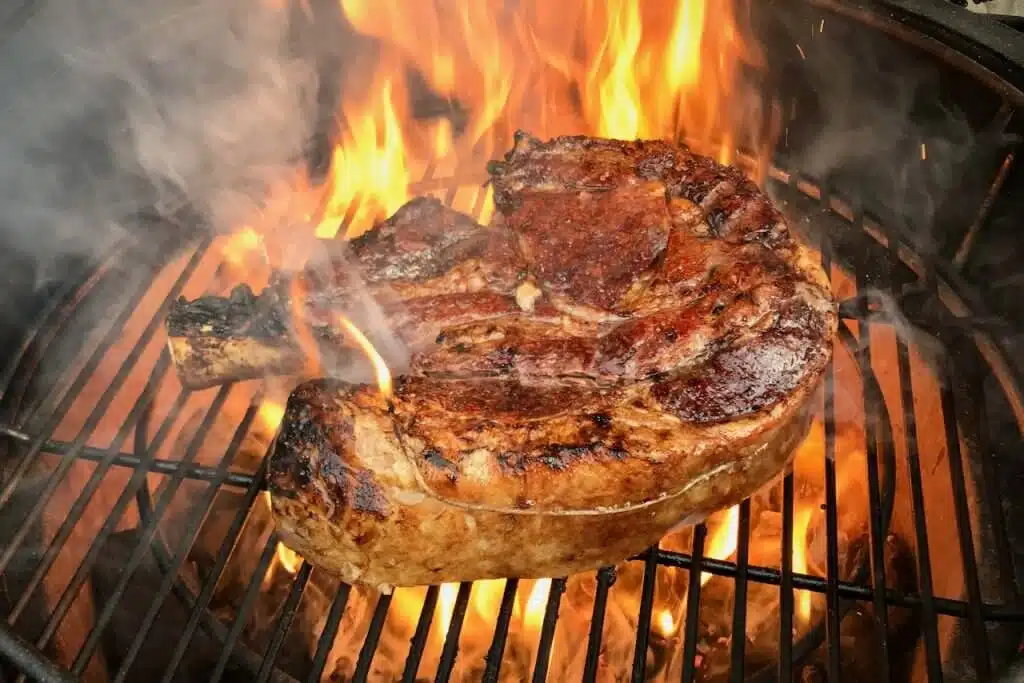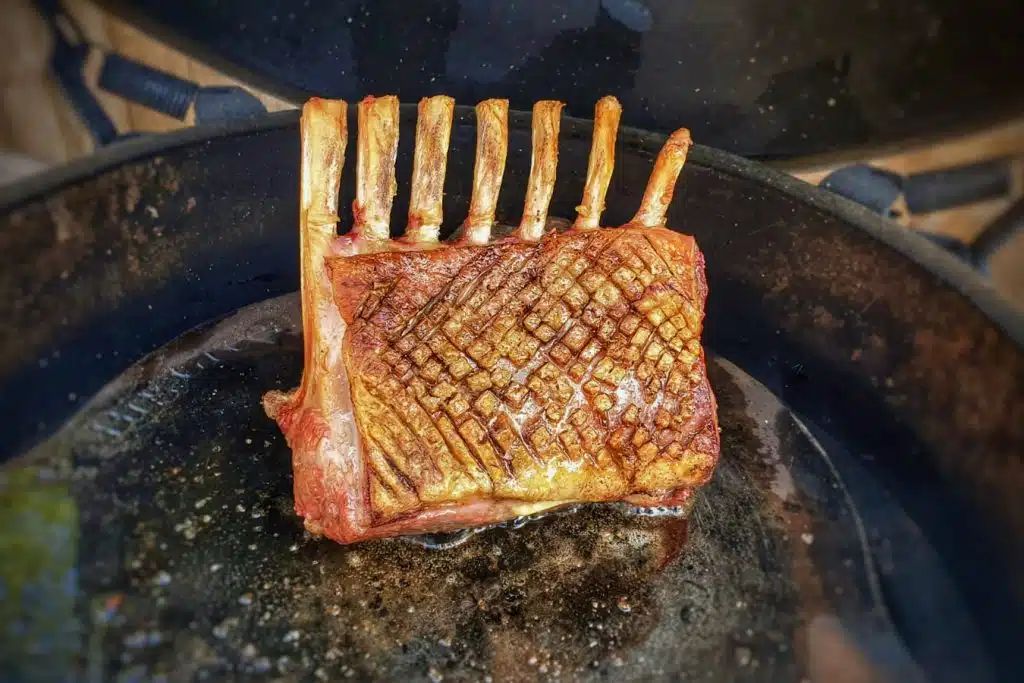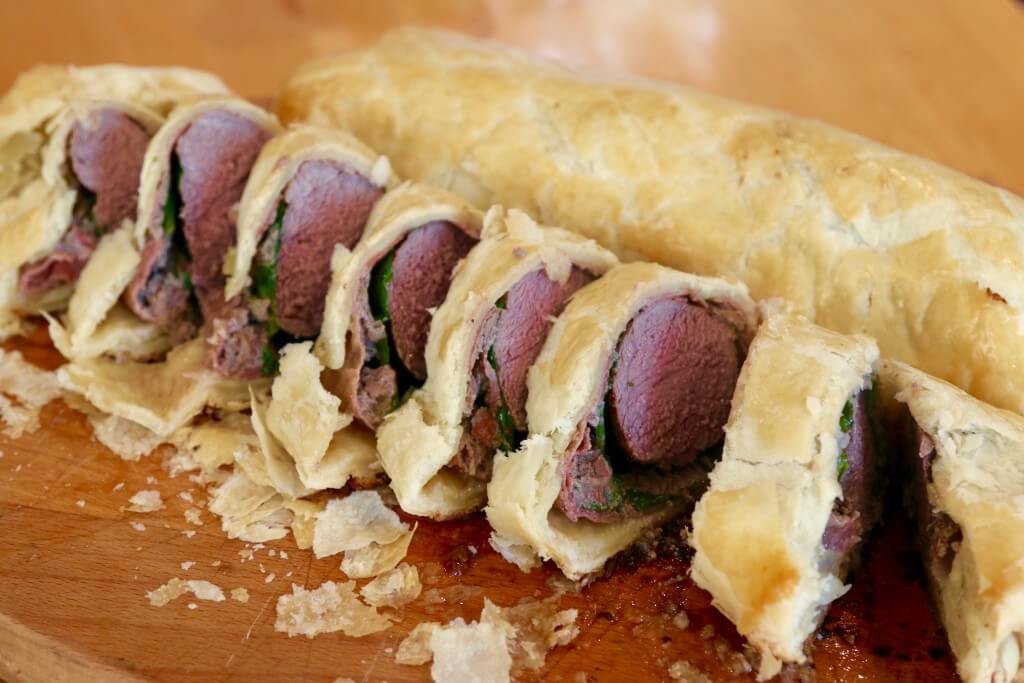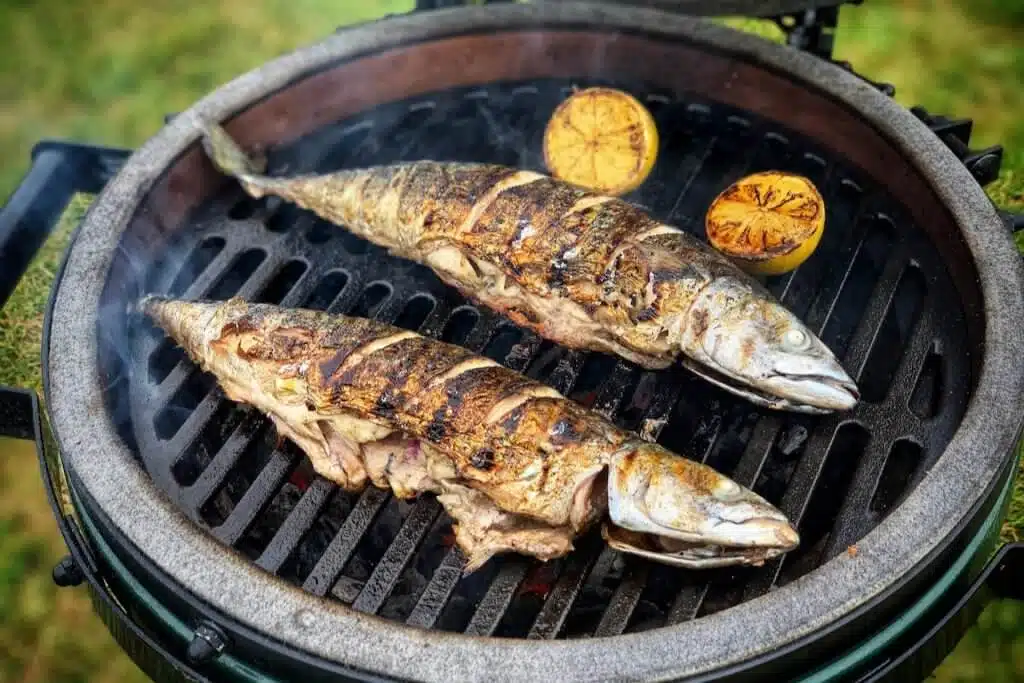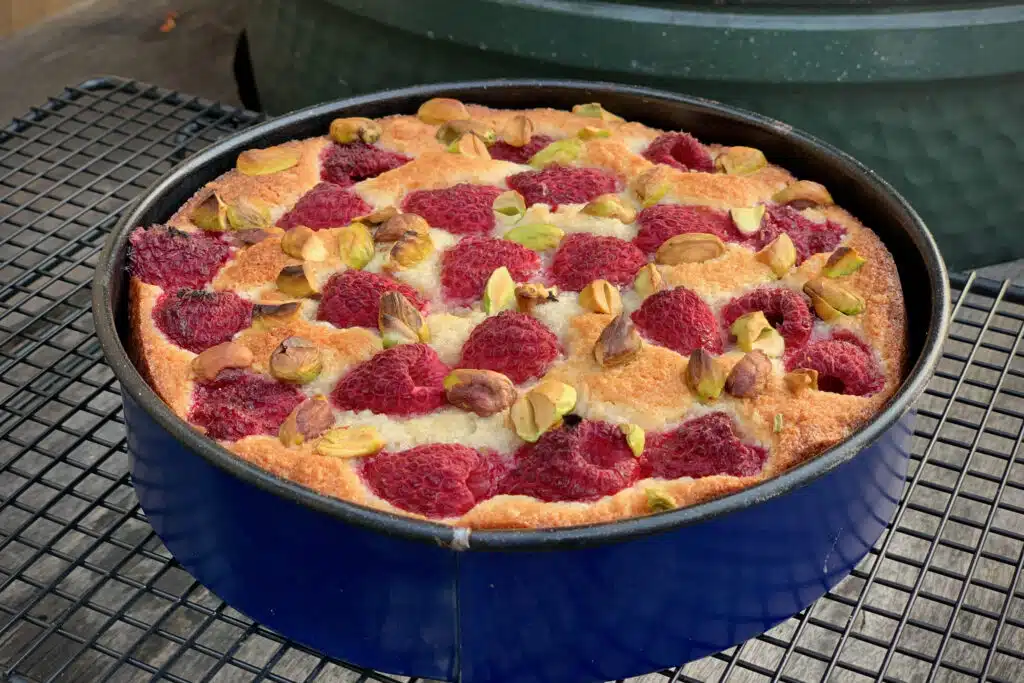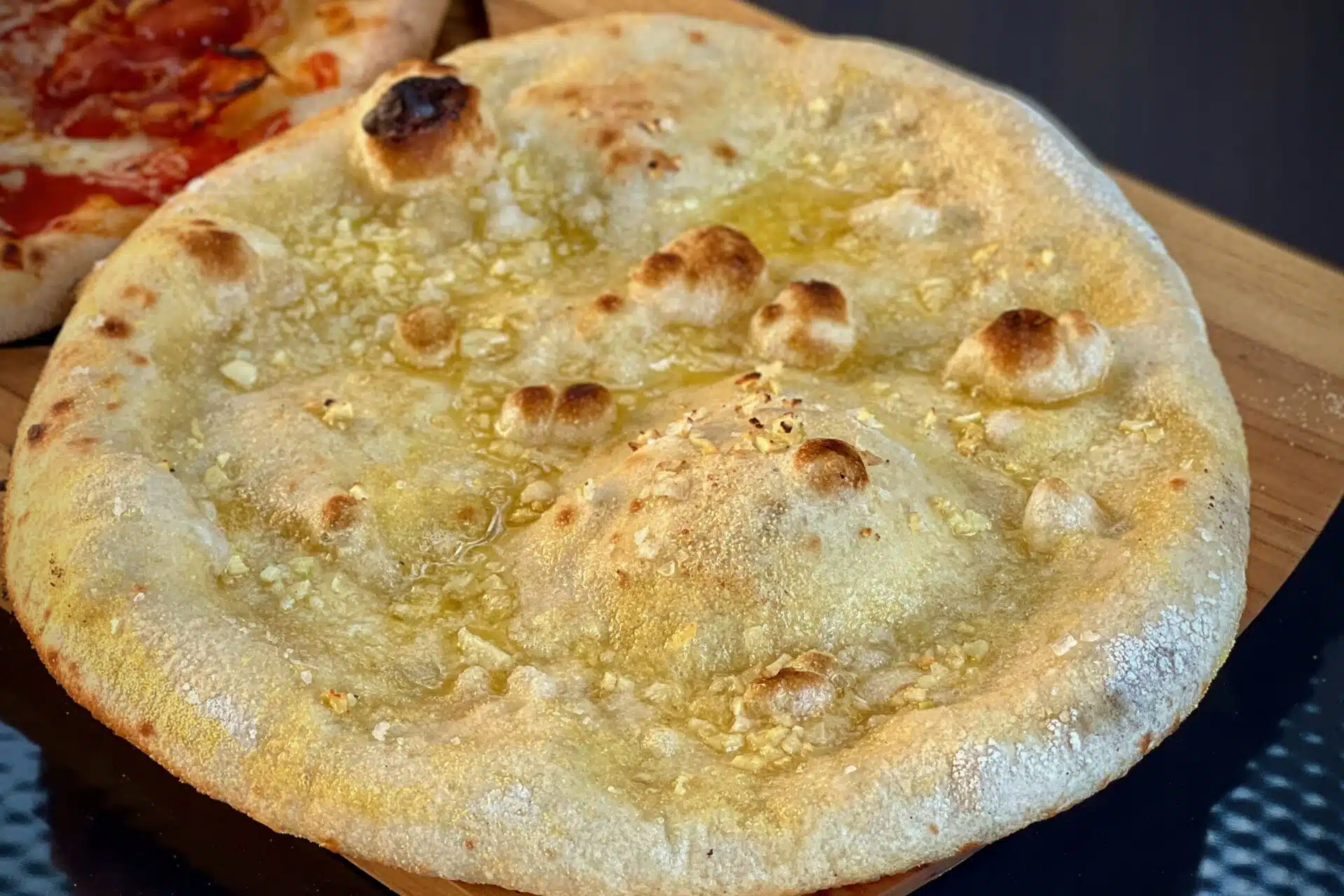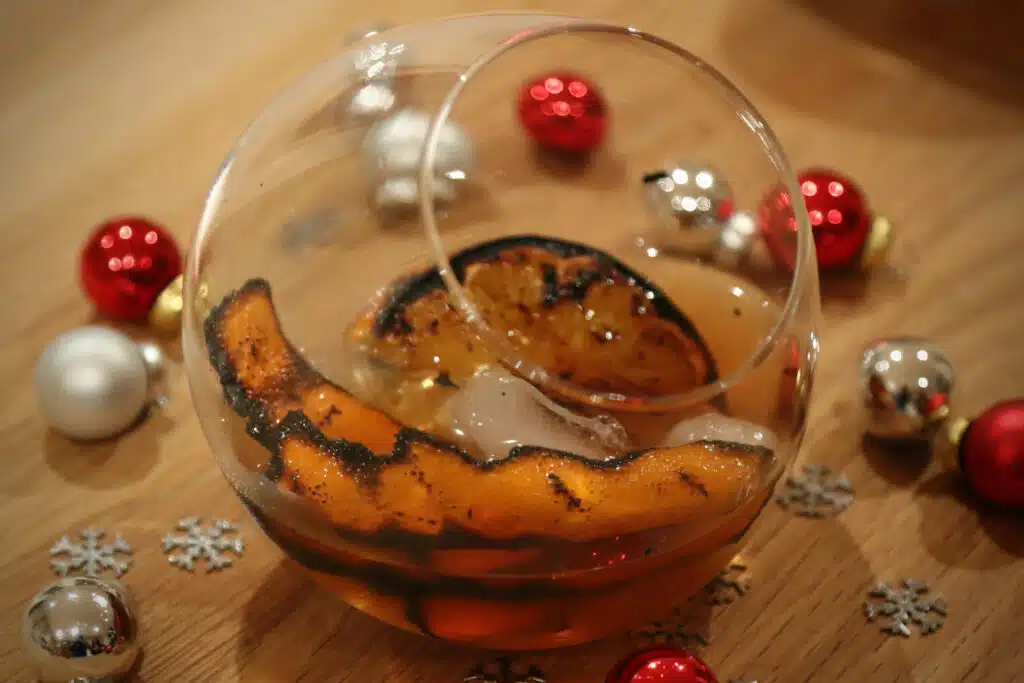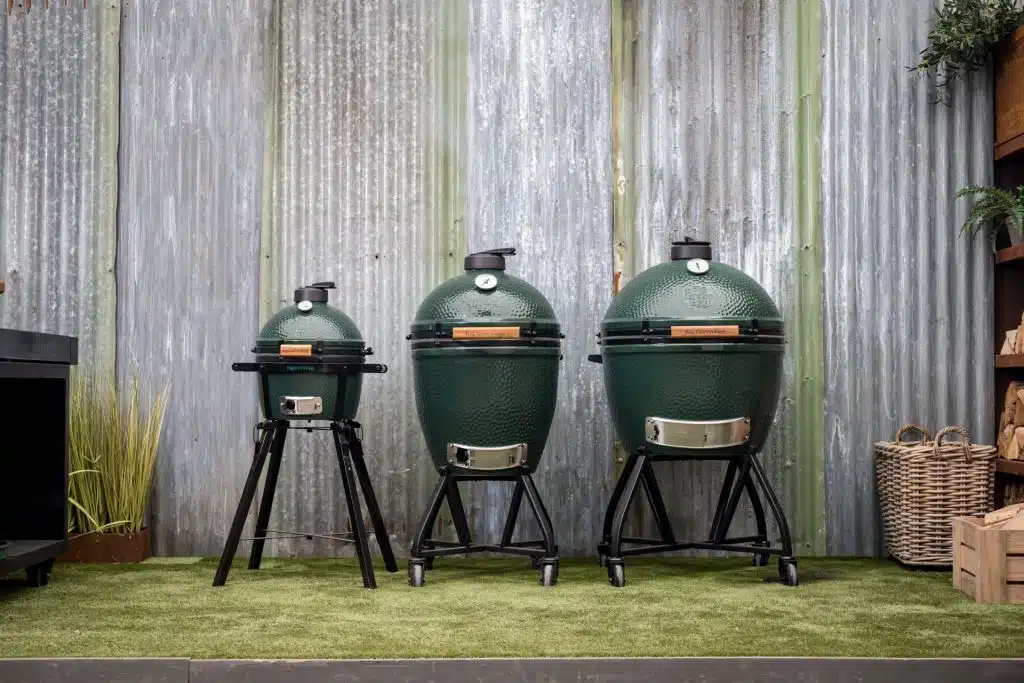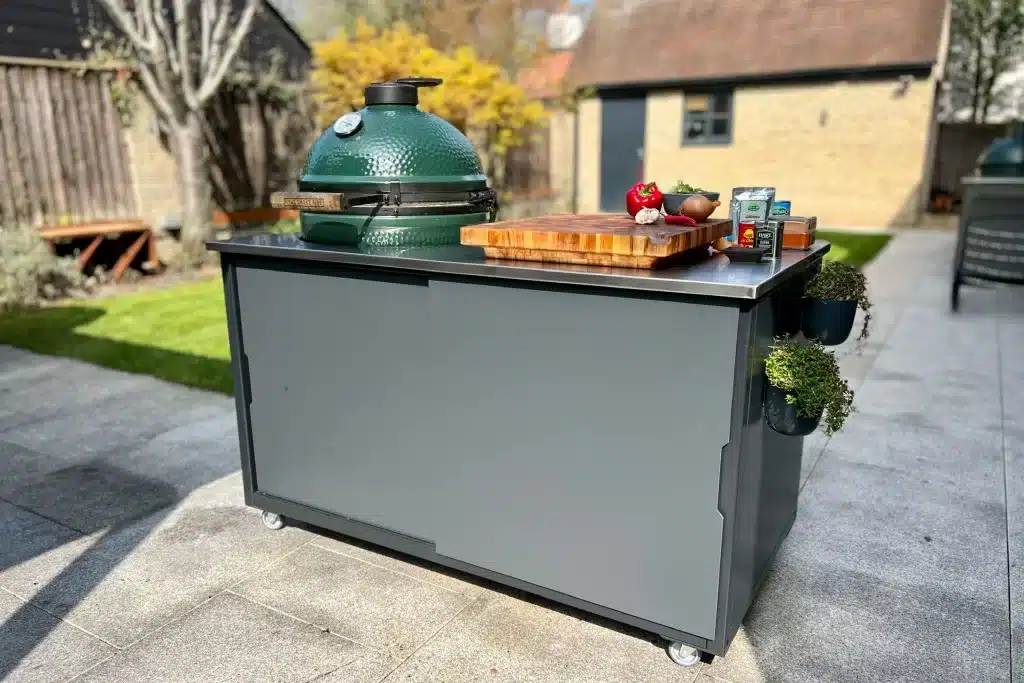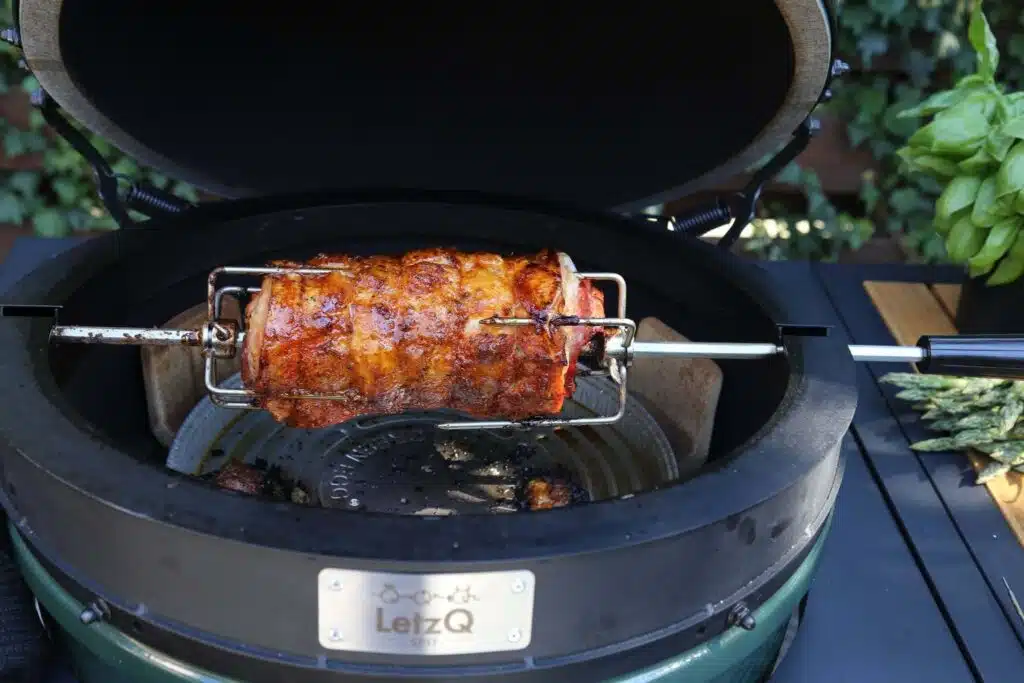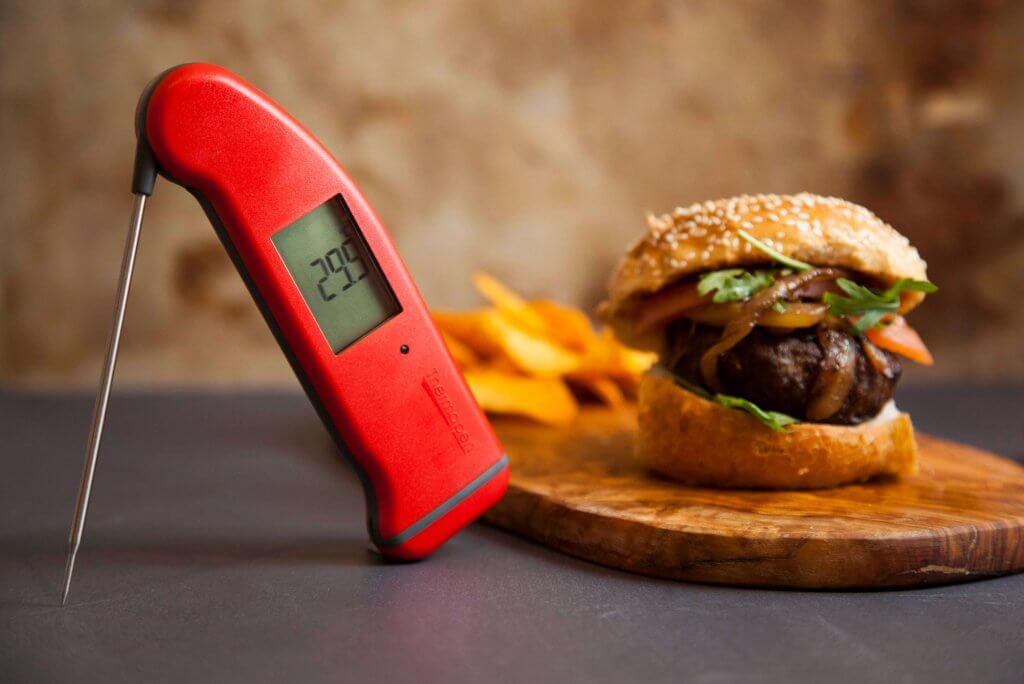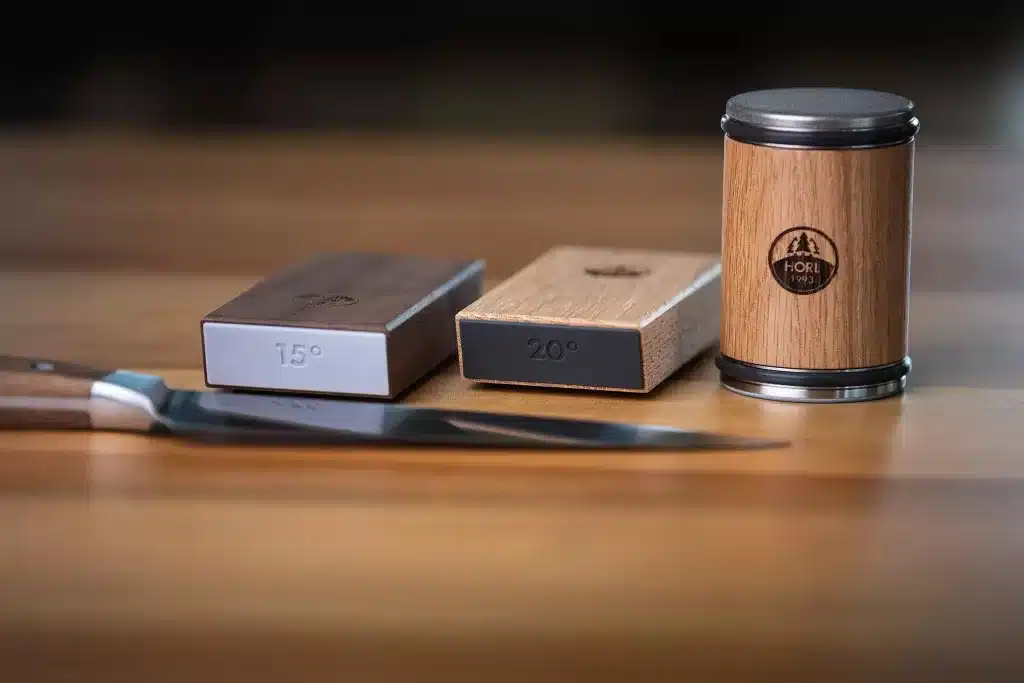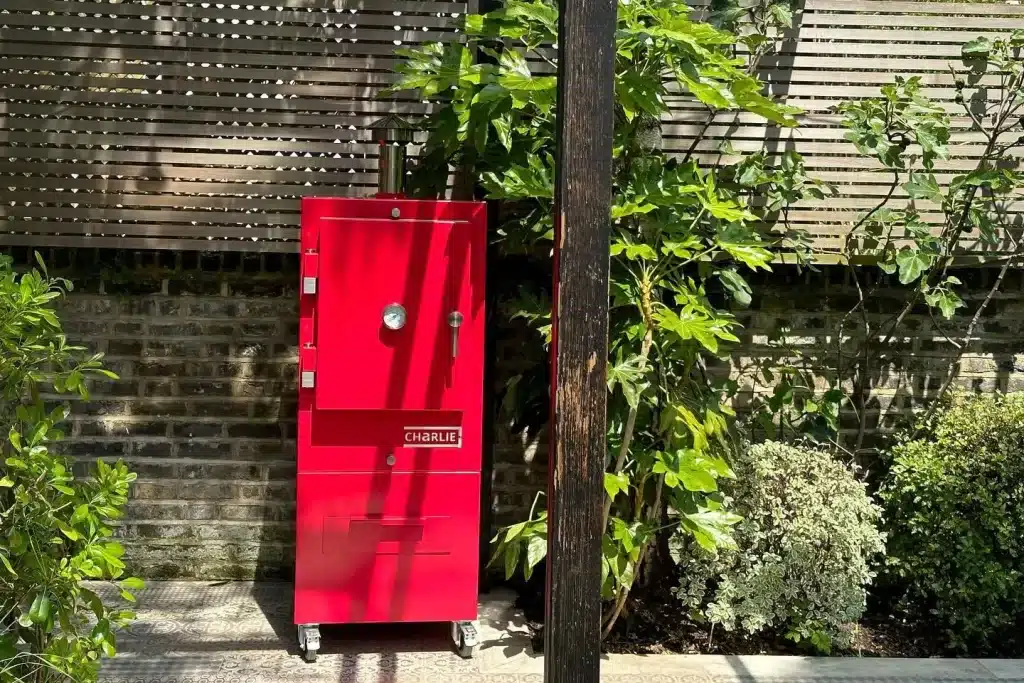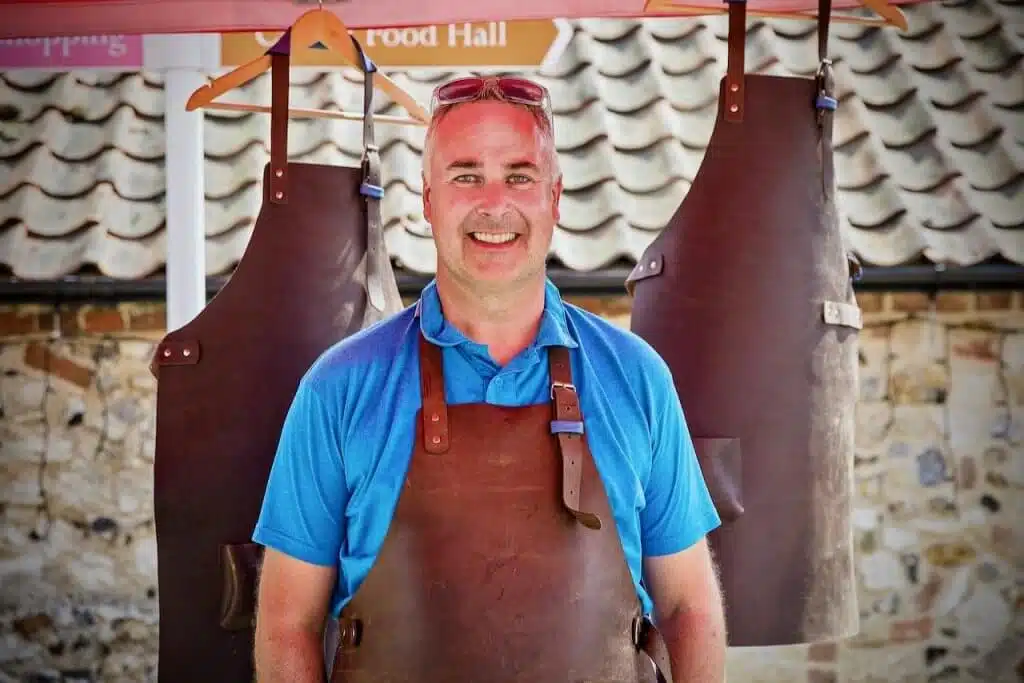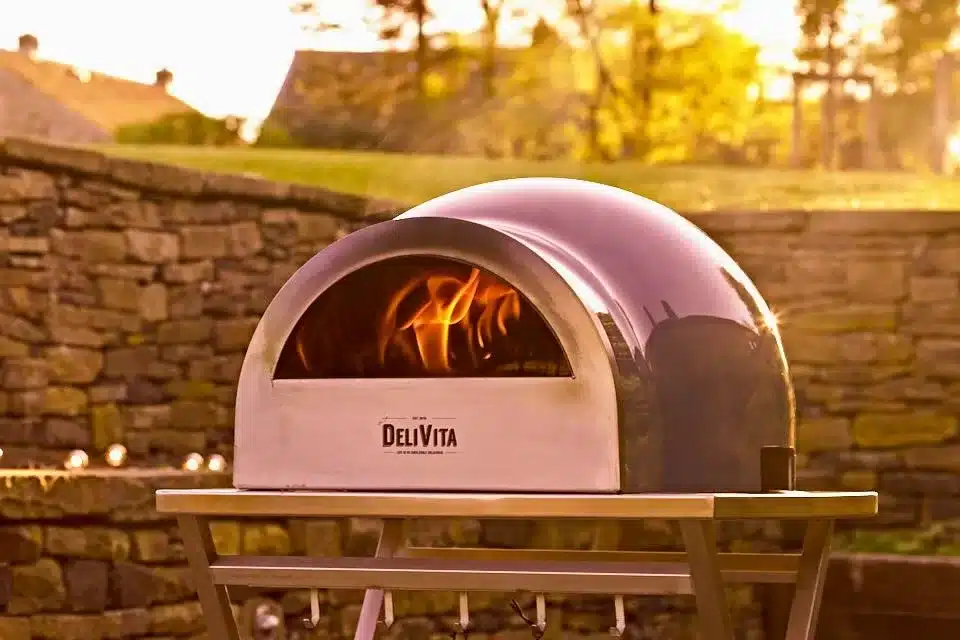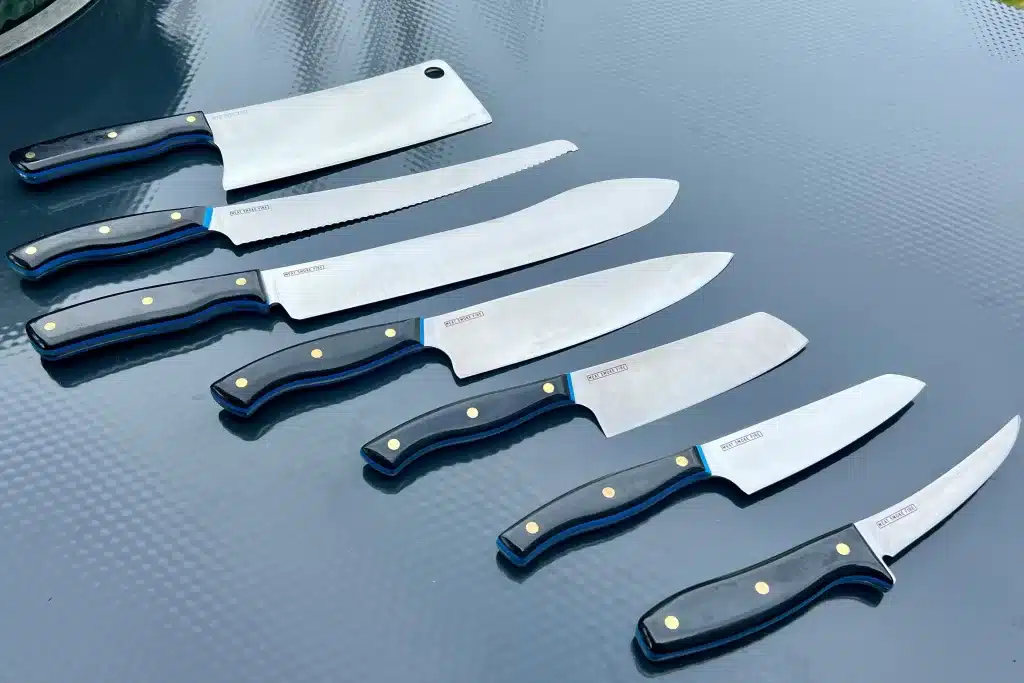Buying from us
Don’t forget to contact us, no matter how big or small the order, and we’ll try and sort you a great deal on our product range.
Call Nic on 07446 960303 or email enquiries@meatsmokefire.co.uk.

Reverse seared Picanha
We used the technique of reverse searing as the Egg is much better at heating up than cooling down.
Using this technique, we can cook the whole piece of meat so that it is the same level of doneness throughout, as opposed to cooking it at 180°C where the outside would be well done, and there would only be a small piece cooked to medium rare.
We cooked the picanha to an internal temp of 48°C before getting the Egg up to 250°C and then searing the picanha.
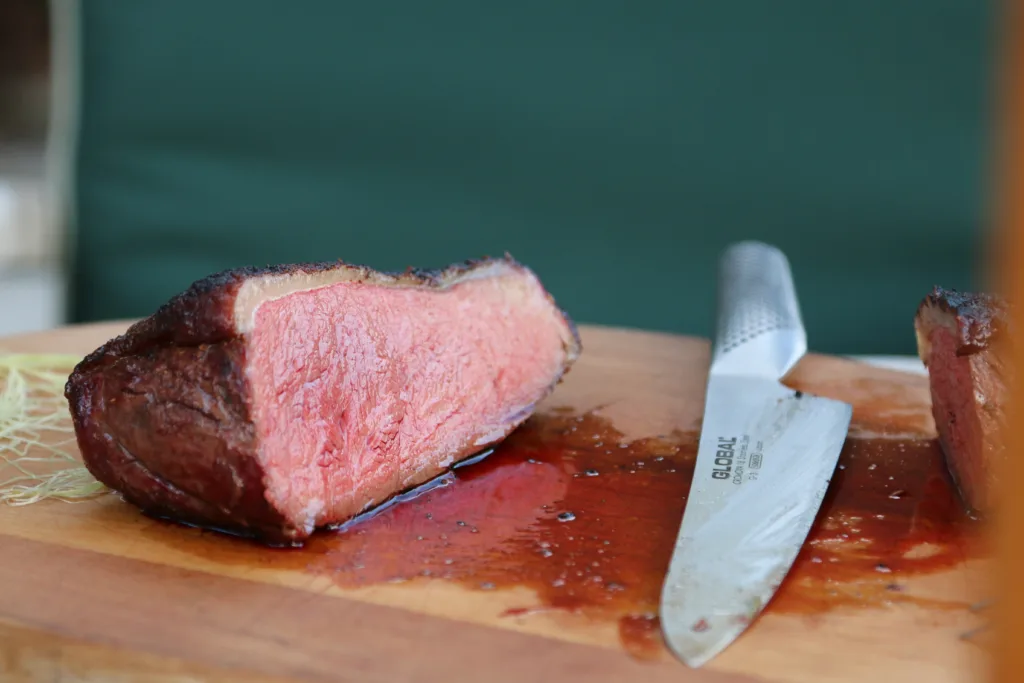
Rotisserie Chicken
Cooked on the LetzQ Spit, we cooked a whole chicken over direct heat, using the Meater+ to monitor the temperature.
The Egg was set between 180-200°C and the Meater+ to cook to an internal temperature of 75°C.
The cooking time on a large chicken was around 1 hour.
We then learned about carving, cutting the breasts across the grain to make them taste more tender and moist.
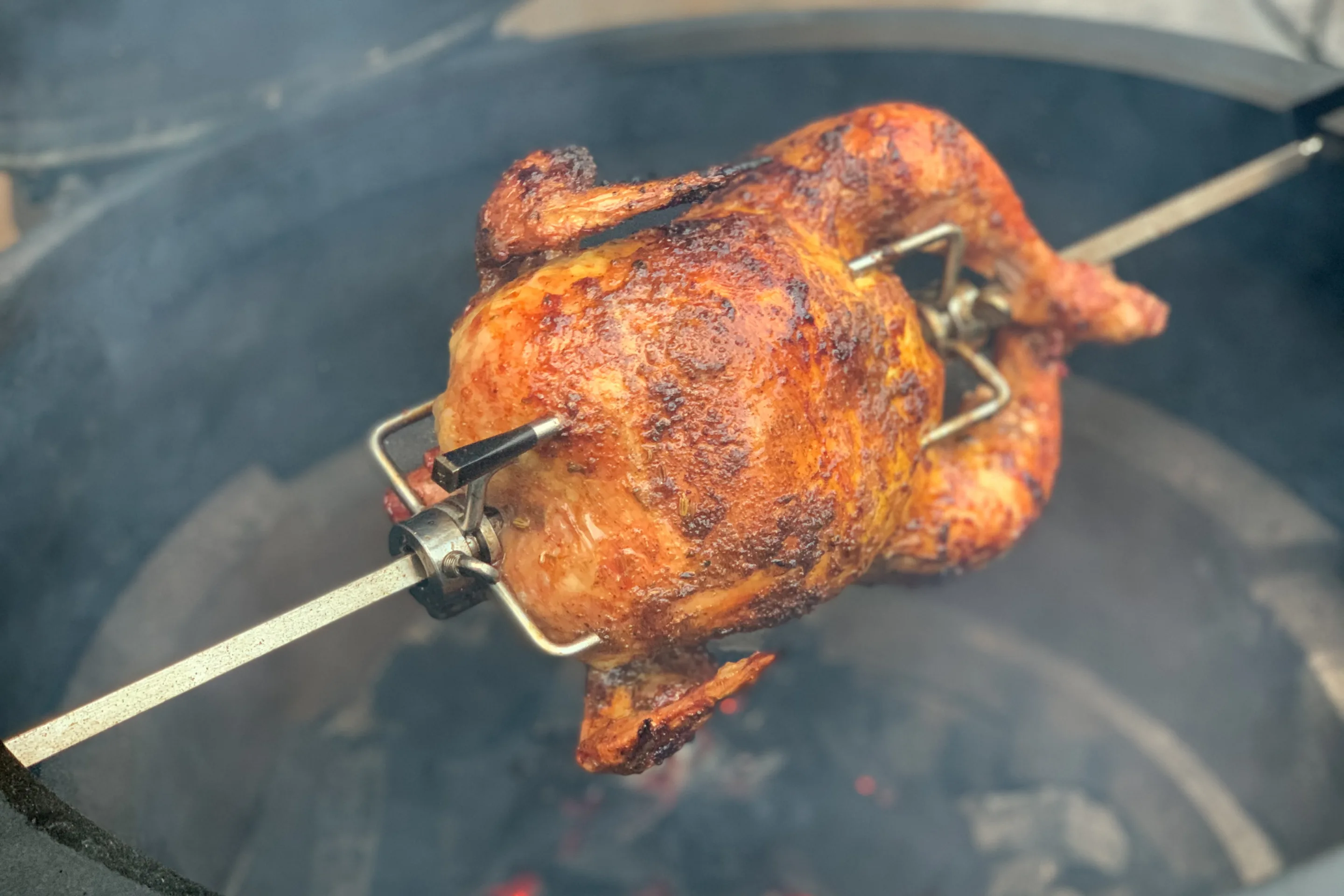
Spatchcock Chicken
This is a great way to cook a whole chicken more quickly. By removing the backbone and flattening the chicken, it will cook in just 45 minutes, and you can cook it over direct heat.
We cooked the chicken for about 30 minutes, bone side down, before flipping it over for the remaining time until the chicken reached 75°C internal temp.
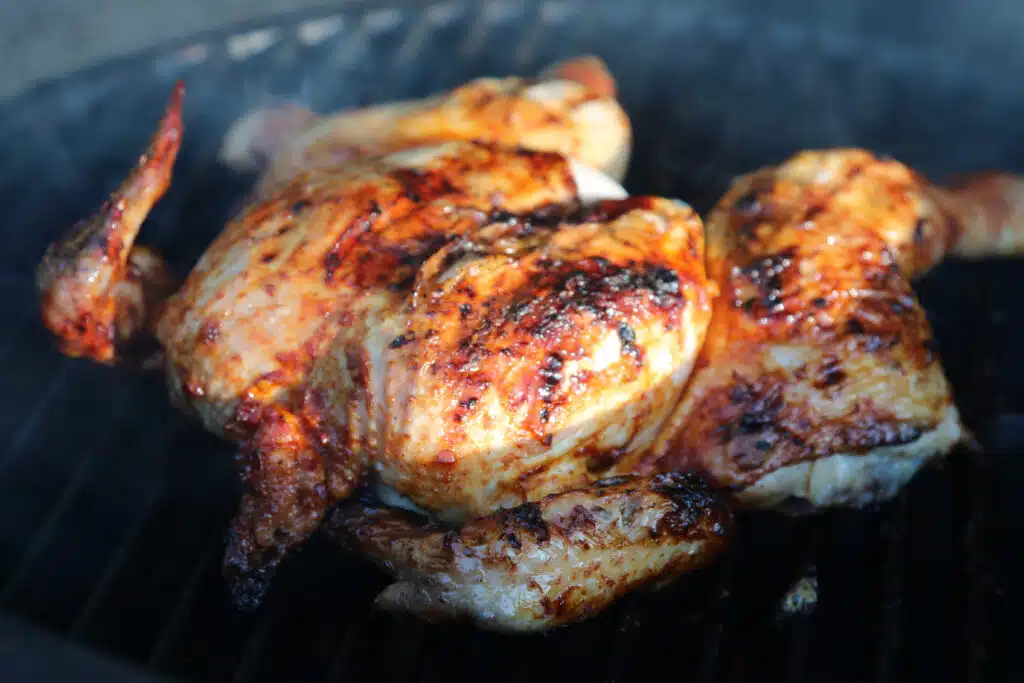
Mini Roasties
Baby potatoes, par boiled and then sauteed for about 40 minutes.
Helena used a large cast iron skillet for these, although it works perfectly well in a smaller skillet or a cast iron plancha.
Use a bit of Maldon salt to season the potatoes and some rosemary (optional).
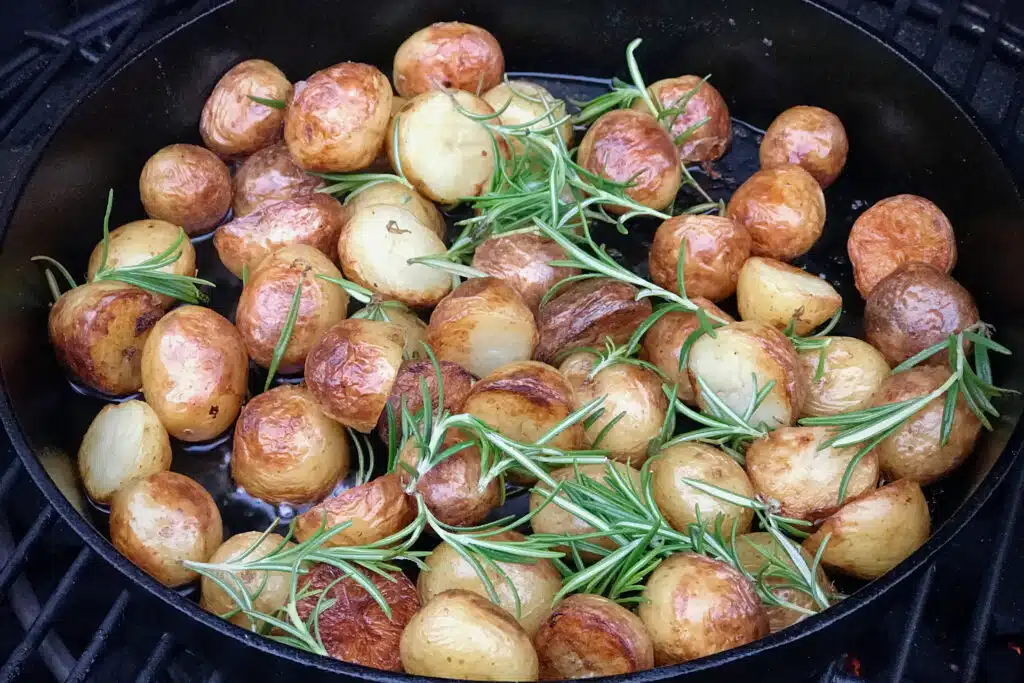
Zingy Red Slaw
While we didn’t make this during class, we had it with lunch. It’s a great slaw, and it contains no mayonnaise. Its acidity cuts through the richness of the picanha and mini roasties as well as adding some texture.
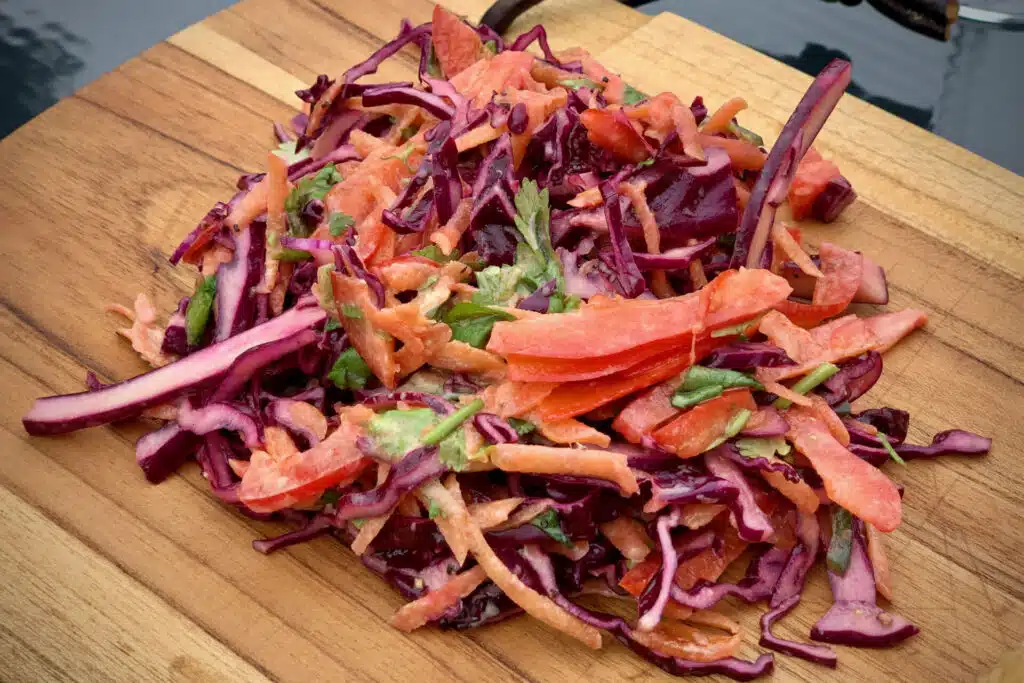
Smoked Chocolate Brownie
We smoked this brownie at 160°C for about 40 minutes, just until the middle had just stopped wobbling.
We used cherry chips to smoke it, but it was just a handful. They were placed onto the burning coals just before the brownie was put in. Our setup was an indirect cook with the ConvEGGtor, stainless grid, and baking stone. We used a 20cm x 30cm x 5cm cheap Tesco baking tin.
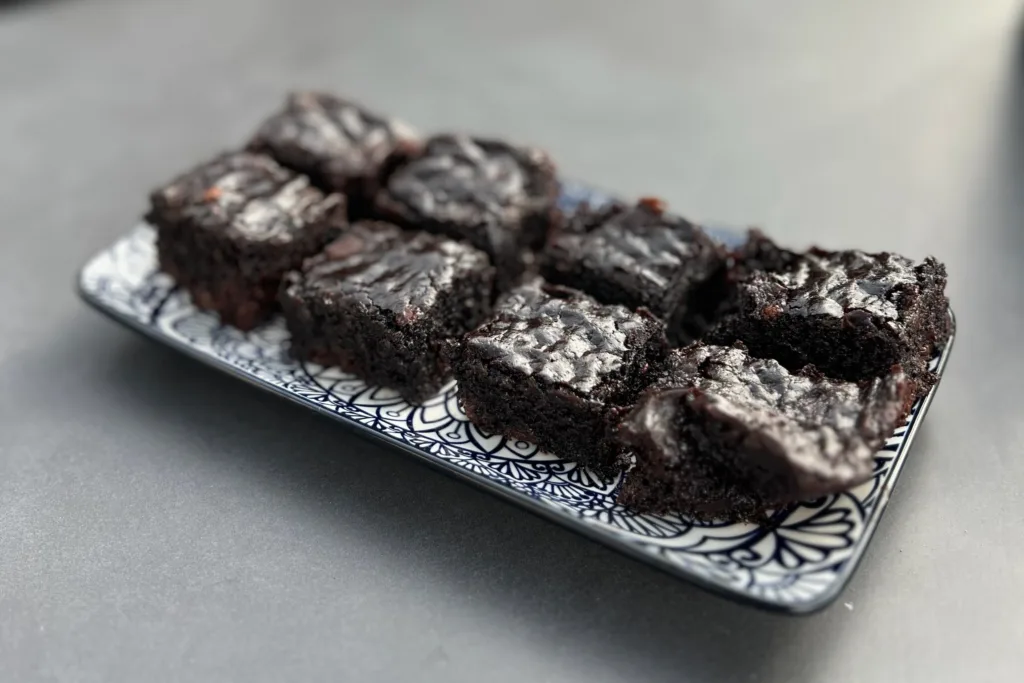
French Trimmed Rack of Lamb
Here we used the ConvEGGtor upturned with the feet pointing downwards. The point of this is that the porous surface draws the fat out of the lamb skin as it cooks.
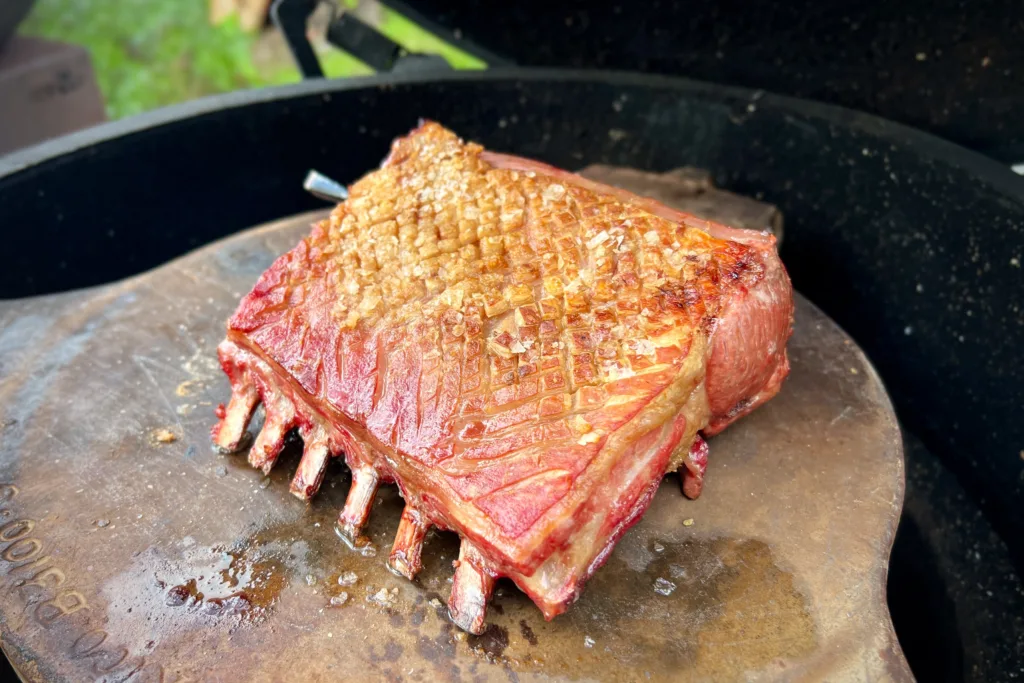
Cauliflower Steaks
This technique came from Simon Rogan, originally. We’ve added the dressing following a visit to Sticks’n’Sushi a few years back. They no longer make the same recipe.
Again this was cooked on the upturned ConvEGGtor. This technique would work well with other vegetables.
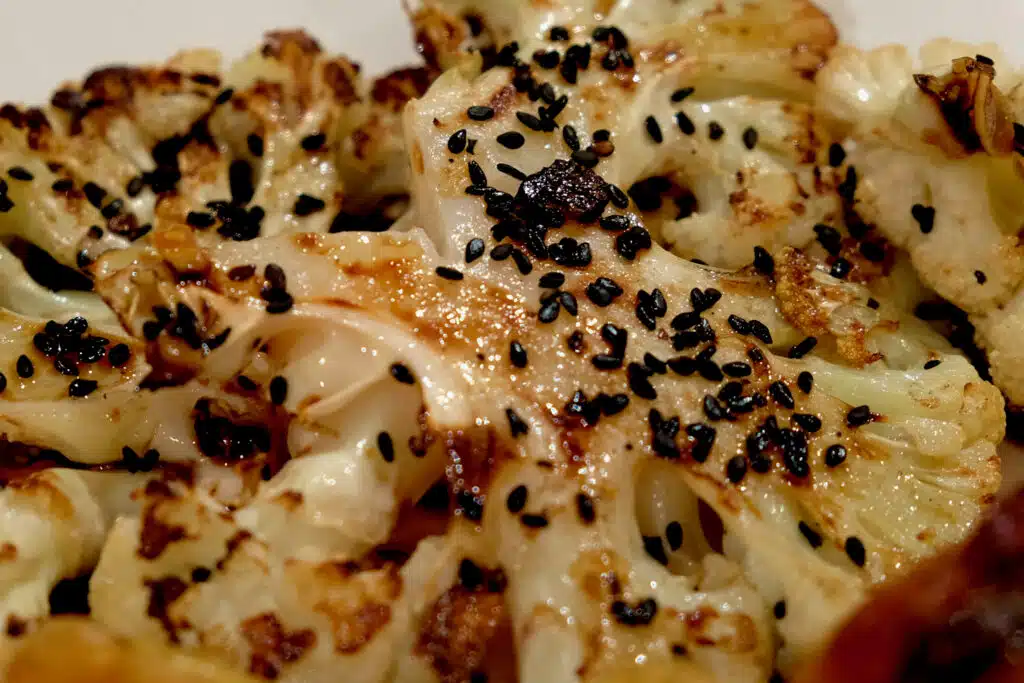
Skirt, rump and rib-eye steaks – seared and dirty
It’s always fun to see what people make of dirty or caveman steak. We love it but only on certain cuts. Skirt has to be one of our favourites.
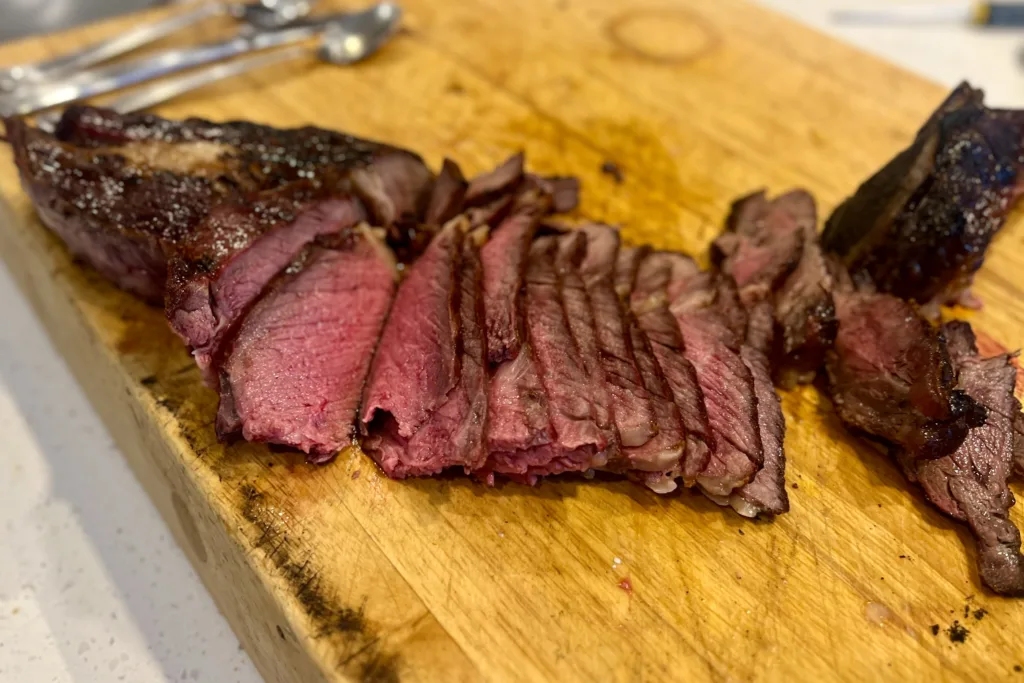
Focaccia
We used our standard bread recipe to make two focaccias. Again we used 20cm x 30cm x 5cm baking tins from Tesco and put the dough in them for the second proof.
I topped each of these breads with garlic and rosemary, and sprinkled on some salt. You could add any topping of your choice.
The key to these is to pour about a tablespoon of oil down each corner of the tin when the focaccia dough has risen. This will get underneath and crisp up the base.
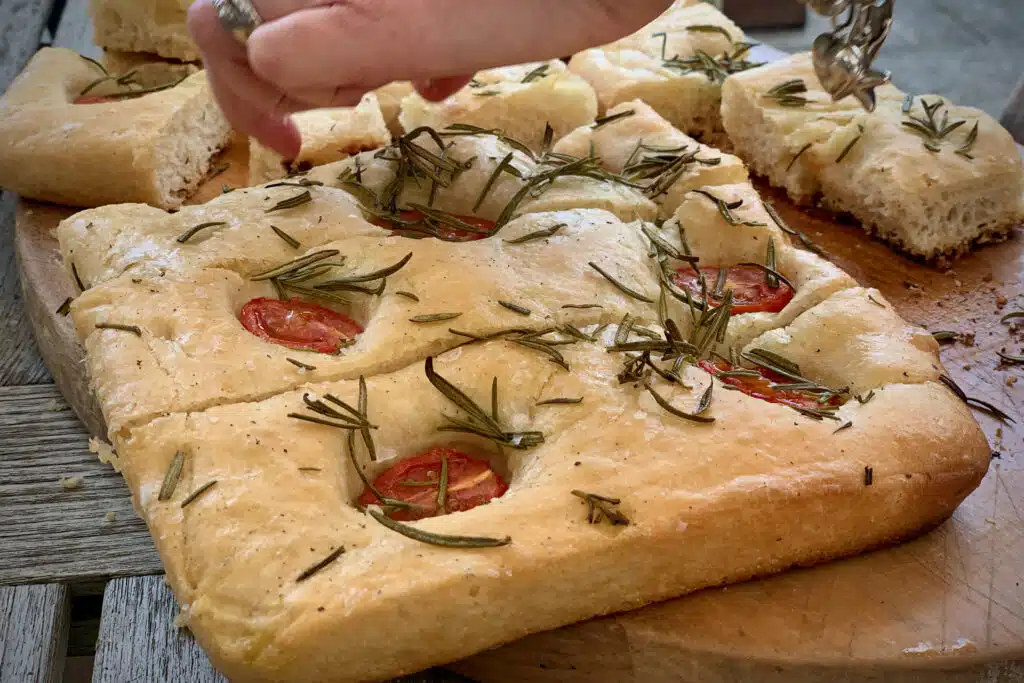
Tarte Tatin
The finale of the day.
This is quite a simple recipe. The key is to have a non-stick pan just slightly smaller than the plate you want to turn it out onto. We use Tefal Ingenio pans with their removable handles.
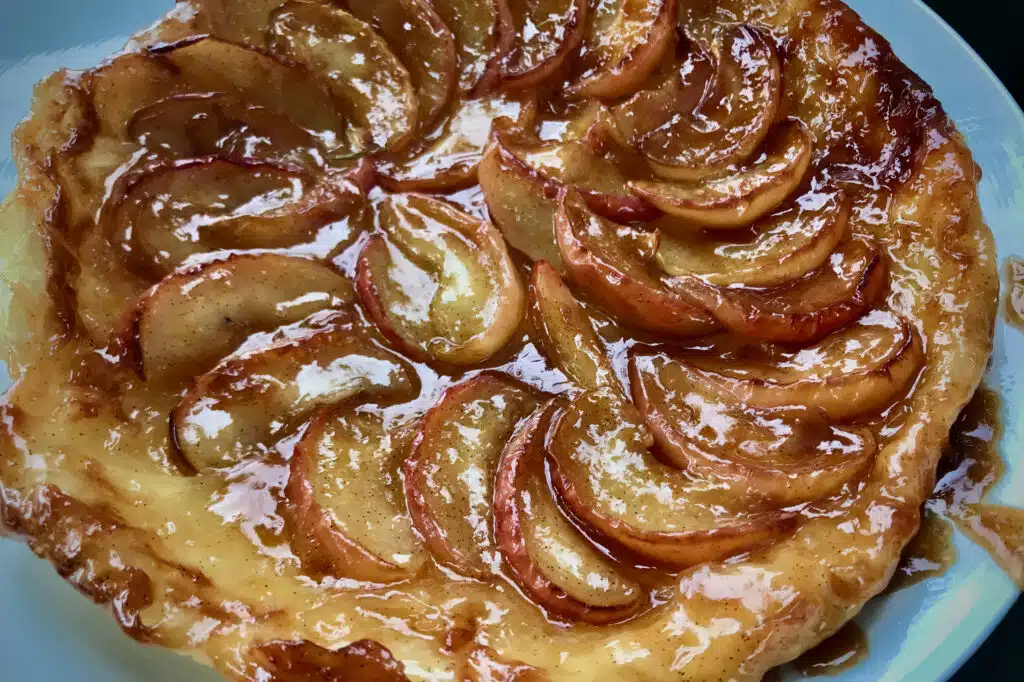
Low and Slow – How meat cooks
We talked about the tougher cuts of meat and how to cook them.
Traditional barbecue from the US was all about using these toucher cuts as they were cheap. Sadly with the BBQ scene having taken off in the UK, supply and demand now means these tougher cuts aren’t the same value they once were.
We’re talking here about:
- Brisket – probably the most difficult cut to get right. You get better results with a bigger piece of meat, so look for a full packer cut. I normally buy from Turner and George and get a full packer cut.
- Pork shoulder (also called a pork Butt) – great for pulled pork. Do not buy a leg of pork, this won’t work.
- Lamb shoulder – lovely in kebabs.
- Chuck – a cheaper cut of beef.
- Jacobs ladder (beef short ribs) – try and buy them as rack, not individual ribs.
- Pork ribs – cook them with the 3-2-1 method.
Remember these cuts will go through the stall as the outer layers of meat dry out. They’ll only be ready when the collagen has melted and formed gelatin, moisturising the meat. Collagen is not being melted during the stall.
Meat takes on smoke better when it is cold and wet. So put your chips and chunks in the coals where they are burning, not around the edges. Meat will take on smoke during the whole cook, but it takes on the smoke much better at the start. People will spritz their meat to keep it wet and to cool it down.
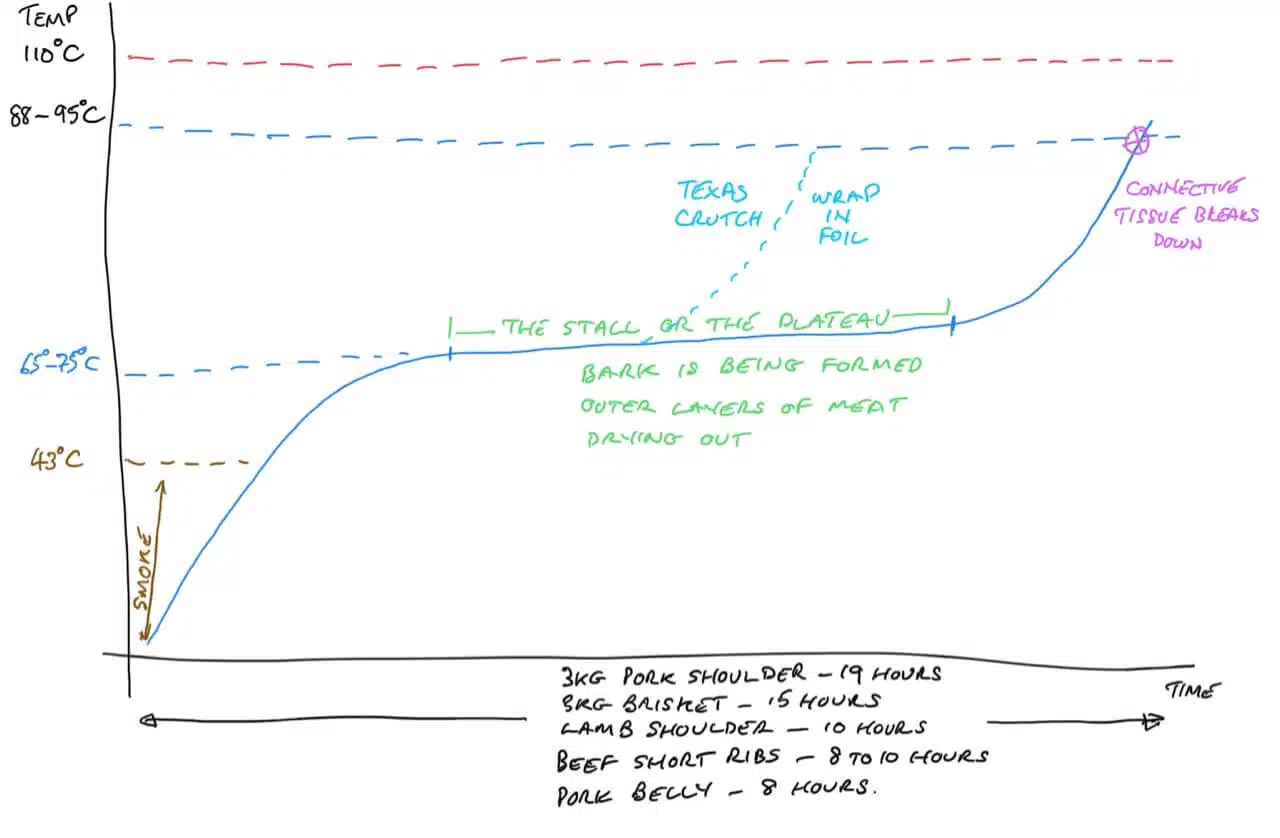
Setting the temperature on your Big Green Egg
We’ve put together a full page detailing how to get the temperature right on your Big Green Egg. Remember to relax, 20°C either way isn’t going to make a massive difference.
Here’s the page: Setting the temperature on your Big Green Egg.
Direct vs. Indirect cooking on the Big Green Egg
Direct cooking is when your food, or the vessel your food is in (i.e. a cast iron pan), is directly above the charcoal on either the stainless steel grid or a cast iron grid.
Indirect cooking is when you use your ConvEGGtor (previously called the Plate Setter, or incorrectly the Place Setter). On this, you would normally seat your stainless steel grid. Here, the heat is pushed up and around your Egg, not hitting the food directly on the bottom.
The way I like to think about when to use the ConvEGGtor or not is if your food could be cooked on the hob in your house, you don’t need it. If, however, you would put the food your cooking in the oven, then you need the ConvEGGtor.
Internal Meat Temperatures

Other resources
Live Cooks
We do a series of live cooks on a Saturday morning. We try and do two a month. All of them are free to join in and can be viewed live on Instagram, or you can watch the recordings on our YouTube channel.
Tips and Techniques
We’ve put up a series of tips and techniques on our YouTube channel.
View our playlist.
Big Green Egg Maintenance
We’ve put up a series of maintenance videos on our YouTube channel.
View our maintenance playlist.
